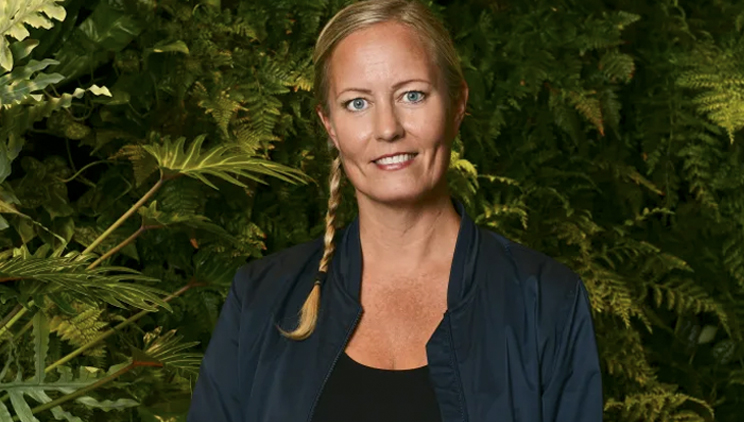 Elin Bergman, styrelseledamot i det cirkulära ekonominätverket Cradlenet
Elin Bergman, styrelseledamot i det cirkulära ekonominätverket Cradlenet
Elin Bergman: It’s way too late to be a pessimist
By 2040, Sweden needs to have a circular economy in place – this is a prerequisite for achieving the climate goal in 2045. In order for us to succeed, all of Sweden’s business owners need to transform their operations. So says Elin Bergman, Sweden’s “Circular Economy Queen” and a circular economy expert at Cradlenet. A network that helps businesses and organizations to accelerate the transition to a circular economy.
Almost 10 years ago when Elin Bergman started at Cradlenet, no one knew what a circular economy was. Compare this to today, when Sweden has devised a strategy and an action plan, and declared its intention to switch to a circular and bio-based economy in its government policy statement. According to Elin, it’s no longer just talk, now it’s about the specifics of getting there.
And this is where Cradlenet comes in. The network was established in 2009, and has around 100 members of all sizes from many different sectors. The main task of the network is to help businesses transition to a circular economy and accelerate this transformation.
“Even though development has progressed quickly, at least in recent years, we still have a long way to go. If we are to achieve Sweden’s climate goal by 2045, Sweden’s business owners need to convert their operations to circularity as soon as possible,” Elin says and continues:
“Many corporations, such as H&M and IKEA, have started this work, have high ambitions and strict targets, and they aim to be completely circular by 2030. They don't know exactly how they’ll reach their targets, but they are developing solutions along the way and just getting it done. This is the right way to go; we simply don't have time to hang around waiting for ready-made, tried and tested solutions.”
But while attitudes towards the circular economy may have changed and many businesses have realized they need to become circular due to the planet’s finite resources, there are still too few companies in Sweden living up to this.
“We’re now at the same level of knowledge that we were 20 years ago about climate change. For many, it’s still only about recycling and waste management. Although recycling is an important part in a circular economy, it’s the final part–the most important thing is to design products and services correctly, this is where you can reduce climate impact by 80% in that final part,” says Elin.
And when asked which Swedish businesses are leading the way, in addition to H&M and IKEA, Elin mentions construction company IsoTimber and outdoor clothing company Houdini as two inspiring and incredibly dedicated examples.
In a circular economy, products, services and business models are designed to benefit the planet, people and businesses. You abandon the traditional throw-away society (the linear economy) and convert to a circular economy, where resources are recreated or reused with as high a value as possible and for as long as possible. Products are designed to be repaired, upgraded, renovated, remanufactured and recycled. In a circular economy, there is no waste–all products and all materials that a business or private individual doesn’t need or can’t make use of simply become a resource for someone else.
It is encouraging to see several exciting projects underway in the area of circular bio-based economy. These include land-based fish farms in large pools, where the waste from the fish serves as nutrients for plants. The fish usually live in a fully or partially enclosed water system, where the water is pumped around in the system, cleaned and reused, again and again. And thus no sea or lake is adversely affected by eutrophication.
“Industrial symbiosis is also very interesting. This can be explained as ‘how can the waste from my industry become a resource for another industry?’. Industrial parks have been built in China for a long time, where businesses from different sectors are selected so they can act in symbiosis with each other,” Elin explains and continues:
“Whereas here in Sweden we tend to gather similar businesses in the same place–think textile production in Borås–which is unfortunate from a circular perspective, since they produce the same type of waste and so can’t interact. There are opportunities for development here.”
Another exciting pilot project is underway right now, where RISE (Research Institute of Sweden) has connected several large IT companies’ server halls in Norrland, which generate an enormous amount of waste heat, with large greenhouses that enable different types of crops to be grown in the middle of the darkest winter. So Elin is hopeful, or as she herself says, “it’s way too late to be a pessimist”.
Cradlenet is a partner of Nordic Sustainable EXPO, and exhibitors and visitors to the fair can expect exciting speakers and experts on stage. Expert advice, best practice and exciting new knowledge will be offered to businesses eager to know more about what they can do to transform their operations.
In particular, Elin hopes to meet companies from heavy industry, such as cement, concrete, forest and paper, and hopefully construction companies, fashion companies, real estate companies, food companies, infrastructure companies and service sector companies. And in response to the question of why we need Sustainable EXPO, she says:
“Collaboration is one of the cornerstones of a circular economy. We need to meet face-to-face, so that we can ask questions, and meet others to get inspiration and find out what other businesses have done, so that more businesses get a move on and create solutions on the fly.”